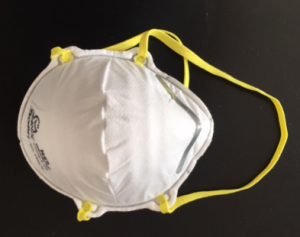
Monitoring WhatsApp posts from more than 7000 physicians in 60 countries is disheartening. Lack of personal protective equipment(PPE), the propagation of contradictory or obviously false information by administrative leaders, unclear instructions, and orders to refrain from sharing information about triage, the poor availability of isolation rooms, ventilators, negative pressure procedure suites, and PPE do not inspire confidence. There is something wrong when health care workers (HCW) desperately design and build their own face-shields and patient isolation hoods, or when a nonprofit accreditation organization such as the U.S. Joint Commission issues an order permitting HCWs to bring their own PPE from home in order to overcome the paucity of PPE in the workplace1.
Preliminary data from China, Italy, Spain, and the United States suggest the current in-hospital infection rate of COVID-19 in HCW is up to 20%2-4. This is similar to what happened during the SARS, H1N1 Influenza A, and MERS pandemics earlier this century. Contributing factors include low awareness, lack of early suspicion, particularly of asymptomatic patients able to carry infection, and poor implementation or compliance with appropriate infection control strategies.
Sadly, HCW are no strangers to the risks of occupation-related lung infections. Tuberculosis, is a known occupational hazard since the 1950s, with studies reporting a greater than average risk to become infected with Mycobacterium tuberculosis and to develop TB disease5. In one report, HCWs were six times more likely to be hospitalized for drug-resistant TB than the general population6. In 2002, Severe Acute Respiratory Syndrome (SARS-CoV) affected more than 8000 patients in 26 countries, killing more than 800 people and infecting at least 21% of health care workers involved in their care7. In 2009, among confirmed and probable cases of novel Influenza A (nH1N1) reported to the CDC less than 3 months after the start of that pandemic, 4% were in HCW, and occurred in situations where the use of PPE was not in compliance with CDC recommendations8. Three years later, Middle East Respiratory Syndrome Coronavirus (MERS-CoV) infection quickly spread to 27 countries. Thirty of the first 161 cases were health care providers9. With a mind-numbing 34.8% crude case fatality rate, MERS eventually affected up to 19.6% of HCW exposed in the workplace10.
HCWs know that every encounter with a known or suspected COVID-19 patient exposes them to viral loads in the form of droplets, fomites or aerosols. This puts them at risk for weeks of quarantine, often debilitating illness, and death. Five years ago, Bill Gates gave a clairvoyant TED talk called The Next Outbreak? We’re Not Ready, in which he outlined the world’s lack of preparedness for a pandemic11. What he did not address was how to balance a HCW’s ethical responsibility to provide care, with an employing organization’s responsibility to assure their safety12. Do HCW workers have a moral obligation to risk their lives in an environment they know is unsafe, and what if they suspect the rules and regulations proposed by their administrators are inconsistent with practices that are possible in the front lines? This double bind is what HCWs face every day.
Reading reports from the Institute of Medicine after the SARS, nH1N1, and MERs pandemics sadly demonstrate that unpreparedness is repeated13-15. If telling my first responder brother to “quit his job,” or asking my Critical Care doc sister “to be ready to take one for the team,” are both morally unacceptable, then all we can ask is that HCWs take personal responsibility to assure their own safety and that of their teams. Whatever it takes.
References
- https://www.jointcommission.org/-/media/tjc/documents/resources/patient-safety-topics/infection-prevention-and-hai/covid19/public_statement_on_masks_from_home.pdf
- https://www.reliasmedia.com/articles/145920-more-than-3000-hcws-infected-with-covid-19-in-china.
- https://www.nbcnews.com/news/us-news/health-care-workers-see-wave-coronavirus-coming-their-ranks-n1174271.
- COVID-19: Protecting Health care workers. The Lancet editorial March 2020;395 pg922.
- Baussano I, Nunn P, Williams B et al. Tuberculosis among health care workers. Emerg Infect Dis 2011;17:488-494.
- O’Donnell MR, Jarand J, Loveday M, al. High incidence of hospital admissions with multidrug resistant and extensively drug resistant tuberculosis among south African health care workers. Ann Intern Med 2010;153:516-522.
- Chan-Yeung M. Severe Acute Respiratory Syndrome and Healthcare Workers. Int J Occup Environ Health 2004;10:421-427.
- MMWR June 19, 2009;58(23):641-645.
- Perl TM, McGeer A, Price CS. Medusa’s Ugly Head Again: From SARS to MERS-CoV. Ann Intern Med. 2014;160:432-433.
- WHO MERS-CoV Global Summary and Assessment of Risk. July 21,2017.
- https://www.youtube.com/watch?v=6Af6b_wyiwI.
- McDiarmid M. Advocating for the Health Worker. Annals Global Health 2019;85(1):16(1-4).
- Emerging Viral Diseases: The One Health Connection: Workshop Summary (2015). National Academies Press. Available at http://nap.edu/18975.
- Respiratory Protection for Healthcare Workers in the Workplace against Novel H1N1 Influenza A: A letter report (2009). The National Academies Press. available at http://nap.edu/18975.
- Learning from SARS: Preparing for the next disease outbreak: Workshop Summary (2004). The National Academies Press. Available at http://www.nap.edu/catalog/10915.html.
